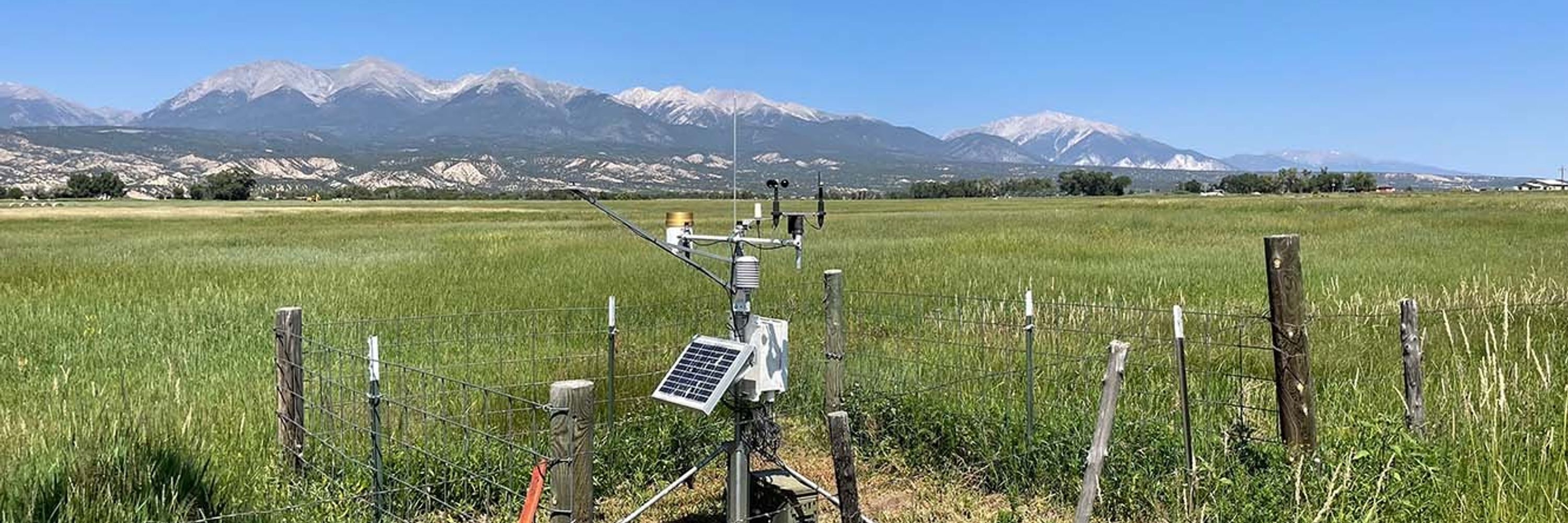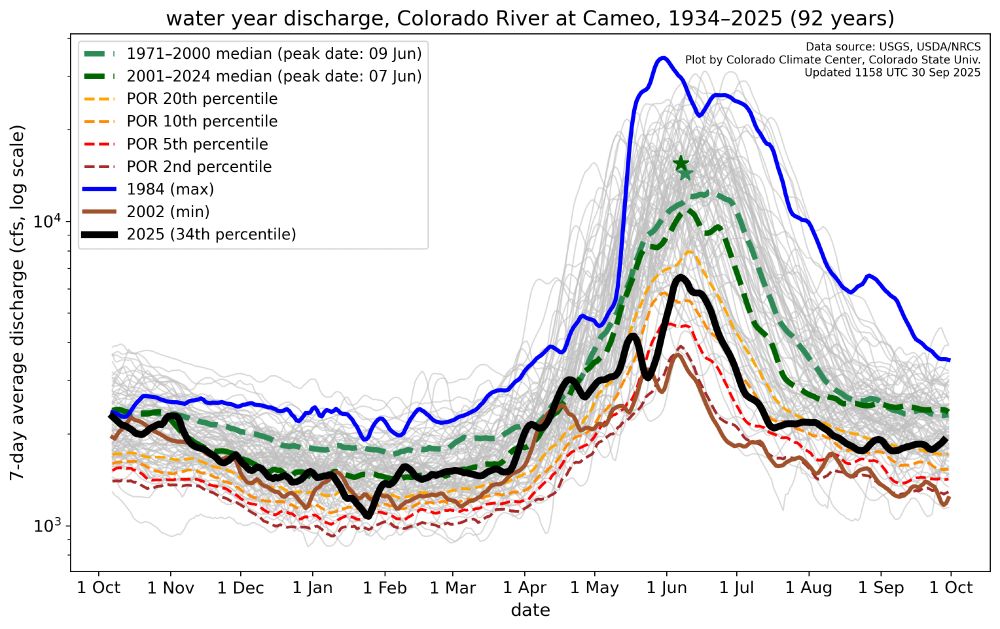
Colorado Climate Center
@climate.colostate.edu
Climate monitoring, climate research, and climate services for Colorado.
Based at the Department of Atmospheric Science, Colorado State University. https://climate.colostate.edu
Based at the Department of Atmospheric Science, Colorado State University. https://climate.colostate.edu
And explore the data yourself with these interactive maps: climate.colostate.edu/normals_stn_...


October 7, 2025 at 1:03 PM
And explore the data yourself with these interactive maps: climate.colostate.edu/normals_stn_...
TL;DR: water years follow the natural cadence of the water cycle from snowpack buildup to runoff.
So while Oct marks the start to "spooky season" for many of us, your local water managers, hydrologists, and climatologists will be celebrating the "new year" with fresh water supply accounting.🎉[7/7]
So while Oct marks the start to "spooky season" for many of us, your local water managers, hydrologists, and climatologists will be celebrating the "new year" with fresh water supply accounting.🎉[7/7]
October 1, 2025 at 11:05 PM
TL;DR: water years follow the natural cadence of the water cycle from snowpack buildup to runoff.
So while Oct marks the start to "spooky season" for many of us, your local water managers, hydrologists, and climatologists will be celebrating the "new year" with fresh water supply accounting.🎉[7/7]
So while Oct marks the start to "spooky season" for many of us, your local water managers, hydrologists, and climatologists will be celebrating the "new year" with fresh water supply accounting.🎉[7/7]
The water year also aligns nicely with patterns in streamflow. It captures the gradual increase in runoff throughout the spring, followed by summertime peak, then the gradual decline in late summer/early fall. [6/7]

October 1, 2025 at 11:05 PM
The water year also aligns nicely with patterns in streamflow. It captures the gradual increase in runoff throughout the spring, followed by summertime peak, then the gradual decline in late summer/early fall. [6/7]
Starting the water year on Oct 1 means we account for most (if not all) of the winter snowpack.
This graph of water year snow water equivalent (SWE) at Fremont Pass shows this well. Look how much water would be unaccounted for during the spring runoff if we only started counting on Jan 1! [5/7]
This graph of water year snow water equivalent (SWE) at Fremont Pass shows this well. Look how much water would be unaccounted for during the spring runoff if we only started counting on Jan 1! [5/7]

October 1, 2025 at 11:05 PM
Starting the water year on Oct 1 means we account for most (if not all) of the winter snowpack.
This graph of water year snow water equivalent (SWE) at Fremont Pass shows this well. Look how much water would be unaccounted for during the spring runoff if we only started counting on Jan 1! [5/7]
This graph of water year snow water equivalent (SWE) at Fremont Pass shows this well. Look how much water would be unaccounted for during the spring runoff if we only started counting on Jan 1! [5/7]
If you're familiar with Colorado, or even the West more generally, you're probably aware that our winter snowpack is the biggest contributor to our warm season water supply.
This snowpack starts to build in the fall (long before the start of the calendar year). [4/7]
This snowpack starts to build in the fall (long before the start of the calendar year). [4/7]

October 1, 2025 at 11:05 PM
If you're familiar with Colorado, or even the West more generally, you're probably aware that our winter snowpack is the biggest contributor to our warm season water supply.
This snowpack starts to build in the fall (long before the start of the calendar year). [4/7]
This snowpack starts to build in the fall (long before the start of the calendar year). [4/7]
But why begin tracking the movement of water in October?
A big reason for offsetting the water year from the calendar year is so that we can properly budget how much winter precipitation will be available for the following runoff season. [3/7]
A big reason for offsetting the water year from the calendar year is so that we can properly budget how much winter precipitation will be available for the following runoff season. [3/7]

October 1, 2025 at 11:05 PM
But why begin tracking the movement of water in October?
A big reason for offsetting the water year from the calendar year is so that we can properly budget how much winter precipitation will be available for the following runoff season. [3/7]
A big reason for offsetting the water year from the calendar year is so that we can properly budget how much winter precipitation will be available for the following runoff season. [3/7]
A water year is defined as a 12-month period spanning October 1 through September 30th of the following year. As the name implies, water years are used to help track the movement of our water. 📆 [2/7]
October 1, 2025 at 11:05 PM
A water year is defined as a 12-month period spanning October 1 through September 30th of the following year. As the name implies, water years are used to help track the movement of our water. 📆 [2/7]

